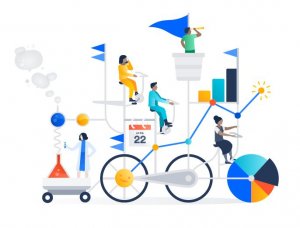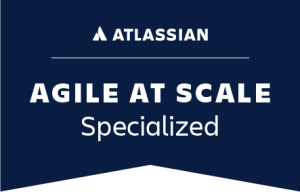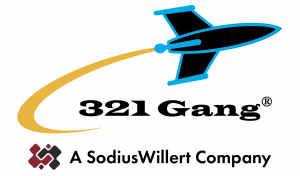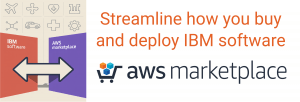
How to rethink your resource management and deliver high-value outcomes
Take a lean-agile approach to resource investment strategies
As organizations move from project–based, time–centric planning to focusing on product–oriented planning, they look to lean and agile practices to ensure they have the right people focused on the most important work. This assures that the organization will be able to deliver high–quality products to market, as quickly as possible, and realize the maximum return on its investments.
This shift from project to product delivery has a significant impact on resource and capacity planning. When teams are assigned to a specific value stream – not a project, but an effort focused on continuous delivery of the features and enhancements that customers want – leaders want to make sure they’ve got the right allocation of skill sets, availability, and funding devoted to that work.
Moreover, when agile teams mature, and especially when organizations adopt scaled agile practices such as SAFe™, the people on each team are responsible for determining who does the work and how they do it; they are self-organizing. This changes the way formerly top–down, project–oriented organizations decide how to analyze work and skill demand, current and future capacity, and overall resource planning. It especially changes the role of the portfolio, IT, and engineering leaders from a command–and–control approach to guiding fully–resourced teams and removing any obstacles that impede success.
This paper addresses the operational and mindset shifts leaders need to make as they are assessing, planning, and executing their resource investment strategies in a value–oriented delivery model:
-Shift the cadence of strategic planning cycles:

Change from an annual or semi–annual budget allocation and hiring
cadence to a shorter cycle to account for workforce or market changes.
-Get real-time visibility into multiple value streams:
Only with a view into all work, and internal and external dependencies,
can leaders make reliable resource and investment allocations.
-Test hypotheses and get fast feedback:
Understand which bets have the best chance of paying off (and which
do not) and allocate people and resources accordingly.
Key terms
· Capacity: The amount of resources (time, skill sets, individual workers) that are available.
· Demand: The amount of resources (time, skill sets, individual workers) the value stream requires
· Lean capacity planning: The practice of assessing resource availability and planning within the balance of capacity and outcomes over hours—a shift that often coincides with less waste and higher success rates.
Shift the cadence of strategic planning cycles

Traditionally, project–based work is measured on how quickly and cheaply a team can deliver “on plan” – a plan that was likely developed at a point in time in the past and was funded with fixed resources. The easy part of this approach is that leaders could allocate resources to a project in one exercise, often once or twice a year, and call it good.
The problem: Rigid, annual execution plans that can’t easily account for new information or changes in circumstances and are out of date almost immediately. When there are unexpected changes to staffing, funding adjustments, or shifts in the market, the planning work that took up weeks
or months has to be redone.
In organizations that shift to delivering customer value rather than projects, the very nature of strategic planning changes. Instead of delivering annual plans to be executed, leaders articulate strategic priorities, often in the form
of objectives and key results (OKRs), or a similar framework.
Once the leaders communicate these strategic priorities, they step back and allow teams to determine their plans of execution, mapped to the objectives, with clear metrics for measuring progress. The role of leaders in this approach is not to manage a plan but to provide the teams with adequate resources and to remove any organizational obstacles in the way.
Now, this doesn’t mean leaders should stop making one– or two–year plans. Big–picture thinking is still important to keep the organization moving in the same direction. The primary difference in this shift from annual planning cadence to an iterative approach is developing feedback loops and making adjustments as needed.
How to adjust the planning cadence for better capacity management:
Shift to a rolling planning cadence
Adopt a forward–looking perspective, such as a rolling three– to six– month time horizon, to assess teams’ progress on delivering on strategic initiatives. In that rolling cadence, leadership and portfolio leadership should collaborate on analysis of capacity forecasts to inform periodic portfolio prioritization. Then, repeat this analysis on a regular cycle to uncover any resource constraints and take appropriate action.
Embrace uncertainty
Instead of planning work months and years out, and still budgeting employee time down to the hour, leaders should embrace the fact that all plans are a guide, not a prescription. The cost to make a plan should never outweigh the benefit of having it. And since the future is uncertain, the more specific an annual work plan is, the more likely it is to be wrong. Instead, portfolio managers should create resource allocation plans for the next one or two increments of the rolling cadence, typically one or
two quarters. Anything beyond that should be considered a first draft.
Get real-time visibility into multiple value streams

It’s probably clear by now that managing capacity and resource allocation in a scaled agile organization cannot be done in a spreadsheet. Yet, this is exactly how many planners in project–oriented teams try to keep track of who’s working on what and how much investment is allocated to each workstream.
Spreadsheets are great at a few things, like lists and calculations. But their manual nature means they’re time–consuming to maintain, and they’re disconnected from other work management tools, such as ticketing systems and automated reporting systems. This means the data in the spreadsheet is almost always slightly (or significantly) out of date.
Moreover, the calculations in spreadsheets used for capacity planning are often based on look–back data, sometimes from old timesheets. The circumstances of a past project may look similar on paper (or in a spreadsheet), but the current situation could be vastly different. There are many factors that can impact the cost of work, such as skill set and tooling. And any number of complications, large and small, can have an impact on the time and investment put into product delivery.
When leadership and portfolio managers plan and analyze resource investment into a value stream, they need visibility into this workstream to know what is the level of investment into these teams. They need the ability to make adjustments, in real–time, as teams iterate and clarify the work and as new information comes to light.
How to best leverage resources via greater visibility:
Leverage work management tools to gain visibility Instead of relying on static spreadsheets for reporting, aggregate team–level data to make all work visible across value streams.
Make decisions based on an integrated view of the roadmap. With a real–time view into all of the value streams, portfolio leaders can identify what percentage of work is completed, what is not yet done, and determine, with confidence, the next priorities and how to staff and fund them.
Surface dependencies that impact capacity planning and time-to-market. This integrated view also allows leaders to examine internal and external dependencies and their impact in a way that static spreadsheets cannot. With this intelligence, leaders can better manage the impact of capacity and investments on personnel, release cadence, and the delivery of customer value.
Go for “roughly right,” not bean counting. It can be tempting to rely on formulas and calculations that spreadsheets can provide. But there is little value in spending days or weeks in such exercises; the math is almost surely out–of–date as soon as it’s complete. In an organization with good feedback loops, “roughly right” allocations of investment are sufficient.
Test hypotheses and get fast feedback

When organizations are focused on delivering a project based on a plan conceived of many months or quarters past, they lose the opportunity to take advantage of sparks of innovation, or to adjust plans with market shifts. They may complete the project, but they risk not delivering on the customers’ expectations.
With a focus on delivering value instead of just delivering a project, teams adopt a practice of continuously testing their ideas and iterating on solutions. They get fast feedback and can manage the course toward the solutions that are yielding the right outcomes.
If the feedback tells them the idea isn’t working, i.e. they’ve underestimated the effort, or it’s not resonating with customers, then the team can tweak the idea or scrap it altogether. The earlier they know this, the sooner portfolio leaders can direct resources toward the right investments. With the knowledge gained from these experiments, teams will have enough information to decide if they should “pivot, or persevere.”
This approach to early, iterative product testing allows portfolio managers to look at everything on the roadmap as a set of hypotheses and corresponding experiments. They go from managing a project–based roadmap to shepherding a portfolio of innovation. And with this mindset, leaders know better which skill sets are required to deliver on the work ahead of the team.
How to assign resources based on top priorities:
Test hypothesis, quantify value, and leverage resources.
When early feedback indicates that an approach would consume the time of ten specialized engineers but won’t meet market expectations, quickly reallocate the team to more promising efforts. Uncover an exciting pathway to a market breakthrough? Move investments to that
value stream and hire five contractors to accelerate delivery.
Improve employee engagement, increase innovation.
Illuminate for teams the correlation between their effort and its impact on the company’s success and their engagement will grow. This direct connection to the company’s success can have beneficial returns, including reducing burnout and increasing the value teams deliver.
Value-oriented organizations win
When organizations shift to a shorter planning cadence with fast feedback loops, have visibility into all the work in progress in each value stream, and plan resource investments based on strategic priorities, they realize many benefits that aren’t available to product–focused companies:
· Increased capacity of individuals and teams to focus on
the most important work
· Less waste and more budget to devote to priorities
· A more engaged workforce of individuals that can contribute
their full skillsets
When executive and portfolio leaders make way for fully–resourced, self–organizing teams and remove any obstacles that impede success, the whole organization – and its customers – win.
Would you like to learn more? Check out the 6 section Webinar “Lean Portfolio Management with Jira Align and Scaled Agile” HERE
Jira Align provides leaders near real-time visibility into the health of their lean-agile portfolio and program initiatives by tapping into their existing Jira/Azure DevOps environment. Successfully implementing Jira Align is also unique – requiring both tooling and process expertise. That’s where 321 Gang comes in! Every member of our technical and sales team has more than 20 years of experience helping clients implement enterprise-class tools to improve how they design, develop and deploy both software and engineered systems. Additionally, every member of our Atlassian certified Jira Align team is a Scaled Agile Framework (SAFe) Program Consultant (SPC) with hands-on SAFe training and transformation experience.
This combination of skills and expertise makes 321 Gang uniquely qualified to help you determine whether Jira Align is right for you and, if so, how best to successfully implement it within your environment. Contact us for a free consultation at JA@321gang.com


321 Gang | 14362 North FLW | Suite 1000 | Scottsdale | AZ | 85260 | 877.820.0888 | ja@321gang.com
© 2023 Copyright 321 Gang
©2023 Atlassian. All Rights Reserved.

